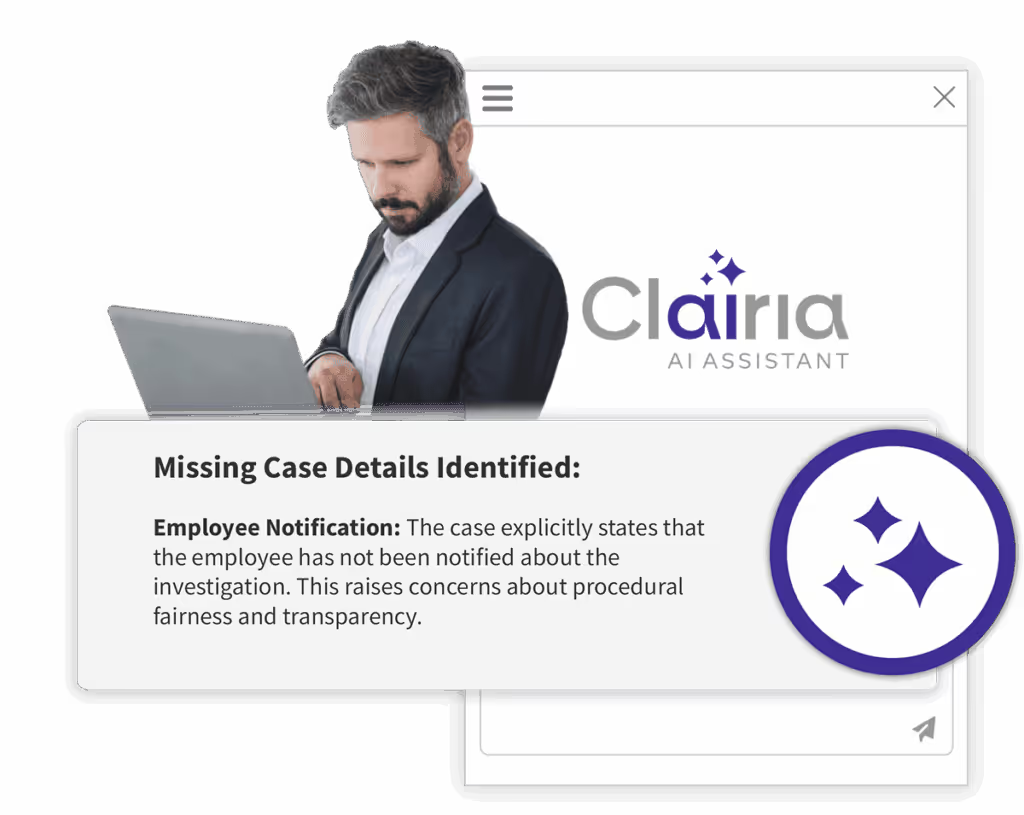Employment law compliance can feel like a never-ending effort, and it’s even worse if you feel like your organization is falling behind. How do some companies make it look so easy?Whether or not compliance is your strong suit, it’s always interesting to learn best practices and opinions of your peers. That’s why we partnered with the HR Research Institute to survey over 200 HR professionals about how they deal with employment law compliance.Using the survey results, we’ve proposed three reasons your organization might be struggling with your HR compliance. Read them (plus ways to improve) below.
FREE RESEARCH REPORT
Read the full report
Download the State of Employment Law Research Report to see how your peers are handling HR compliance.
Get the ReportYour HR Compliance Program Lacks Maturity
Just 33 percent of survey respondents said that their organization’s compliance processes are highly mature; in other words, that their HR processes are clear, consistent, and understood by employees. On average, the larger their organization, the more likely a respondent was to say that their program was mature. This could be because larger companies often have more resources (both staff and budget) to commit to building and maintaining strong HR compliance procedures.So, what does program maturity (or lack thereof) look like, exactly? How can you improve without extra resources?First, mature organizations have a robust intake process. This should include at least one reporting mechanism (e.g., hotline, webform, dedicated email address) that is easy for employees to use. A hotline provides:
- Anonymity and Confidentiality: Employees can report concerns without fear of retaliation, as their identities are protected. This fosters a safe environment for reporting sensitive issues.
- Accessibility: Hotlines are always open, so reporters can speak up whenever it is most convenient for them. They also offer service in multiple languages and with accommodation for hearing- and vision-impaired reporters to ensure every caller can voice their concerns.
- Real-time Reporting: You'll receive and can act on hotline reports right away, so reporters don’t have to wait, and issues don’t have time to escalate.
With a proper intake process, you can decrease incident resolution time, reduce risk, and empower employees. When complaints don’t fall through the cracks, you’re less likely to be hit with non-compliance penalties or lawsuits.Next, mature organizations quickly and effectively triage reports as they receive them. Not every complaint warrants a formal investigation, and the triage process helps you decide which reports you can resolve in another way. This frees up time, effort, and money to put toward the cases that do need to be investigated.Compliance expert Tom Fox suggests rating reports on a threat level scale of one to five, with one having little effect on the organization and five involving “criminal liability.” The higher the threat level, the faster you need to respond and the more sophisticated the resolution process should be.Finally, efficient, consistent, and thorough investigations are a central part of a mature HR compliance program. Meric Bloch, Principal of Winter Compliance, says that a mature investigations process:
- "Cannot just react to reports . . . [but] must look proactively to identify vulnerabilities that may enable future employee misconduct”
- “Must consider the needs and perspectives of management, auditors, regulators, and stockholders”
- “Thinks beyond
the organization. What are other organizations doing? What industry benchmarks might help us?”
- Considers “the regulatory framework in which the organization operates”
- “Identifies contributing factors and unacceptable business risks . . . [to] contribute to the organization’s success”
FREE MATURITY MODEL
Improve your organization’s maturity
Download our free maturity model to assess your HR programs and get tips on how to improve.
Get the ModelYou’re Not Using the Right (or any!) Technology
Not having the right tools can inhibit your processes from being as efficient and effective as they could be. Less than 40 percent of survey respondents feel that their employment law compliance processes are part of an integrated system, are highly automated, and use up to date technology. In addition, a Case IQ poll found that over 60 percent of case managers’ time is spent on manual tasks, using outdated spreadsheets or catch-all software.A purpose-built workplace case management system provides data-driven reports that help you manage risk, spot trends, and protect employees and the organization by preventing incidents, as well as fines and reputation damage. Home-grown or dated solutions (like spreadsheets) come with many challenges, including duplication of effort and information silos, security risks, and inconsistent documentation, opening your company up to fines and lawsuits. Case management software like Case IQ helps your team save time and money, ensure compliance, and reduce risk, all with one tool.Having tools that make investigative work easier and more consistent is not only beneficial to the investigator, but to the organization as a whole. For example, automating elements of case management (such as case assignment, workflow steps, and case creation) with case management software:
- Reduces human error
- Decreases response and resolution times
- Improves consistency and data accuracy
- Minimizes guesswork and assumptions
- Enhances collaboration between team members and external contributors (e.g., subject matter experts, consultants)
- Frees up valuable human resources for more complex tasks, including analysis and policy work
Case management software can also improve your HR and investigative teams’ efficiency, ensuring better employment law compliance. With all case information stored in one centralized platform, your team can close cases faster (no need to hunt down information and documents) and maintain a single source of truth. You can also integrate your tech stack, such as your HRIS, so you can easily fill in employee information without a lot of manual data entry. Finally, case management software keeps sensitive data secure, and user-based access helps you control who can see and work on each file. You can even track who did what to a case and when in its audit log, in case you’re challenged in court or by regulators.
WEBINAR SERIES
Want to learn more about the benefits of case management software?
Check out our free webinar series.
Watch NowCompliance Is More Important (and Dynamic) Than Ever
Because regulations are always changing, compliance has never been harder to grasp. At the same time, it’s also never been more important, as agencies are releasing with more stringent requirements and more employees are speaking up about unacceptable work environments.Fifty percent of survey respondents feel that that their organization will place greater importance on compliance in the next two years. How? Forty-six percent plan to improve the employee user experience through compliance-related technologies such as employee self-service (44 percent) and system integration abilities (41 percent).Obviously, the number-one reason to establish a compliance culture in your organization is because regulators require it. “For example, the U.S. Justice Department recently announced new policies to prosecute corporate misconduct more vigorously,” explains Matt Kelly, editor and CEO of Radicalcompliance.com. “If a company under criminal investigation wants to achieve a more favorable settlement, it will need to demonstrate a culture of compliance.” To achieve this, you need “written policies for voluntary self-disclosure of trouble, full cooperation with any ensuing investigation, and improving the compliance program to fix the flaws that allowed the misconduct to happen,” says Kelly. “Moreover, companies won’t just need to have such policies; they’ll need to exercise them, too. Senior leadership will need to make that commitment clear and visible.”A workplace culture that values compliance and ethics has many more benefits besides avoiding or reducing penalties, though. It “encourages your workforce to bring any concern to light, so that management can address the issue and govern the whole enterprise well,” Kelly explains. Issues won’t have as much time to escalate, and employees will feel safe and valued knowing that you address their concerns quickly.A speak up culture reduces risk for both your organization and for your employees. “That’s the central message that compliance officers should use to make the business case for a culture of compliance,” Kelly says, “such a culture helps us be more responsive to risks against the business, compliance or otherwise.”
FREE WHITE PAPER
Learn the true power of a speak up cultureDownload our free white paper from compliance expert Tom Fox.Download Now
How Case IQ Can Help
Using Case IQ’s modern case management solution, your organization can improve its HR compliance using just one tool. Learn how your team can improve reporting of incidents and grievances, resolve cases more efficiently, and take steps to stop future issues before they happen here.











